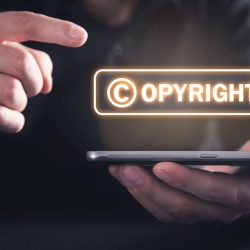To enjoy the maximum legal protection for its trademarks, a business must select trademarks that are legally protectable. If a mark is not legally protectable, third parties, including competitors, will be free to use the mark. The basic requirements for legally protectable trademarks are:
- Inherently distinctive
- Eligible for federal registration with the USPTO
To be protectable as a trademark, a term must be distinctive, which means it identifies a good or service as originating from a particular source. Distinctiveness is evaluated along a spectrum ranging from highly distinctive marks to terms that cannot be protected because they are generic for the category or type of goods or services for which the mark is used.
The five general categories along this spectrum are:
- Fanciful.
- Arbitrary.
- Suggestive.
- Descriptive.
- Generic.
Fanciful, arbitrary, and suggestive marks, which are considered inherently distinctive, can immediately identify the source of a specific product or service. Inherently distinctive marks can be registered on the USPTO’s Principal Register.
- Fanciful marks are words coined for use as trademarks that have no previous common dictionary meaning. E.g. KODAK for cameras and photographic products; EXXON for oil and gas.; and ROLEX for watches.
- Arbitrary marks may have common meanings, but they do not suggest or describe the goods or services for which they are used. E.g. APPLE for computers; OMEGA for watches; DOVE for soap.
- Suggestive marks suggest a quality or characteristic of a good or service but do not directly describe it. Thought, imagination, and perception are required to connect the good or service to the trademark. Examples of suggestive include: MICROSOFT for computer software; and COPPERTONE for suntan oil
Descriptive terms can be registered as trademarks only after they acquire distinctiveness, or secondary meaning, through use in commerce.
Generic terms are never entitled to trademark protection.
In addition to generic terms, certain types of subject matter cannot be registered as trademarks at all. This includes:
- Marks that are confusingly similar to a prior mark; and
- Deceptive terms
Marketing personnel often seek to adopt marks that in some way communicate to consumers characteristics or attributes about a particular product or service. However, selecting a mark with descriptive characteristics poses the risk that the mark will not be protectable without establishing secondary meaning, or that the mark’s scope of protection will be limited. Federal registration of a business’s trademark with the USPTO is important to maximize the mark’s scope of legal protection. Therefore, we recommend businesses confirm their proposed marks are eligible for federal registration before investing in their branding efforts.





